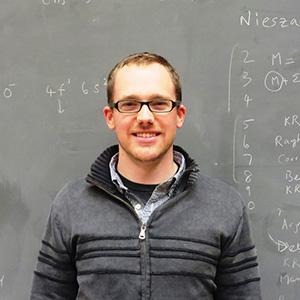


Status: Graduate Student
Major(s): Physical Chemistry
Minor(s): Scientific Computing
Area(s) of Study: Silicon Surface Chemistry
The creation of accurate models to represent the Si(100) surface with ab initio techniques is of great interest for obtaining precise energetics and mechanisims of surface reactivity. Many reactions with surfaces, including the Si(100) surface, are investigated using periodic boundary condition (PBC) calculations. However, there are deficiencies to using this method. PBC calculations describe periodic reactions, as opposed to a reactant that undergoes a localized interaction with an infinite silicon surface.
Also, this approach has a large computational cost, especially when used with methods that include Hartree Fock exchange. As an alternative to PBC calculations, hybrid methods can be used to create cluster models by truncating the Si(100) surface and partitioning the system into two or more regions of varying accuracy. Covalent bonds are broken at the boundary between the two regions, creating atoms which each have a "dangling bond."
It is common to cap the "dangling bonds" with Hydrogen atoms, as this usually leads to acceptable results. However, capping a truncated Si(100) surface leads to unphysical
effects since Hydrogen has a larger electronegativity than Silicon, shorter bond lengths with Silicon, and places two Hydrogen atoms in very close proximity to each other in regions where multiple covalent bonds are broken from one
Silicon atom. I am currently developing pseudoatoms to overcome these deficiencies. The atoms utilize modified Effective Core Potential (ECP) parameters which can accurately reproduce the electronegativity, bond lengths, and bond angles of a bulk Silicon atom so that they can be implemented to minimize truncation effects from the Si(100) surface.